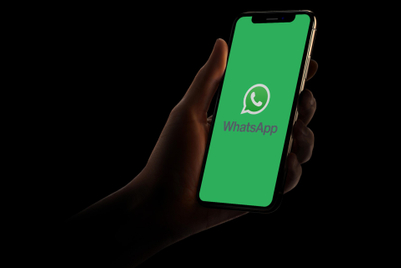
The seismic rise of artificial intelligence and large language models (LLMs) in 2023 has paved the way for a new frontier in 2024. One that is simultaneously set to shake up the app economy as we know it, and help bridge the attention gap between brands and consumers.
The recently launched GPT Store from OpenAI is quickly transforming how both consumers and brands interact with AI and one another. The launch of the store marks the next iteration of artifical intelligence, whereby usage moves beyond just a generalist use of chatGPT towards engaging with specialised AI agents, known as ‘GPTs’.
These agents are not only adept at specific topics, but also bridge the gap between users, third-party services and Application Programming Interfaces (APIs), offering a nuanced and tailored experience. Unlike traditional AI models, GPTs are fine-tuned with data previously inaccessible, acting as intermediaries between users and a plethora of external applications and content.
This advancement marks a departure from the classic Graphical User Interface (GUI) where users interact with graphical components such as icons, buttons, and menus to a more dynamic and interactive Conversational User Interface (CUI), allowing humans and computers to talk to one another.
The potential this offers brands to engage and interact with consumers in new ways is massive— especially as attention spans continue to wane.
Building an accessible community
What further amplifies the potential of the GPT Store is the introduction of monetary incentives for GPT creators. Mirroring the early days of Apple's App Store, which ignited the app economy, a revenue-sharing model in the GPT Store allows creators to easily monetise their GPTs. This strategy not only incentivises innovation, but also paves the way for a diverse range of applications.
With OpenAI announcing the revenue-sharing program's initiation in the first quarter of 2024, anticipation is high.
To date—and prior to this incentivisation strategy kicking off—the store already hosts more than three million specialised GPTs, covering a vast array of topics from coding and science to creative planning and ideation.
Popular GPTs include Canva, enabling users to design presentations and social media posts, and Consensus, offering insights from scientific research papers. Slide maker, DeepGame, and Sous Chef by OpenAI are other notable mentions, each catering to unique needs like presentation generation, immersive role-playing, and recipe suggestions based on fridge contents.

Just a few months ago, it was reported that OpenAI would collaborate with Apple’s former chief design officer, Jony Ive, to develop the “iPhone for artificial intelligence”. The purpose being to build a hardware device which enhances user experience with AI. This product will only advance the accessibility of GPTs, and give brands who have their own another touchpoint to engage with customers.
How can brands join the GPT revolution?
Creating a GPT is remarkably user-friendly. Unlike building mobile apps, it requires no software training. Instead, anyone with a ChatGPT subscription can use the GPT Builder tool to create a GPT they desire. Type in the idea and upload any assets such as documents, images, or links to external APIs, leaving the tool to build the rest.
The advent of highly-customised systems via GPT is ushering in a revolutionary era, particularly for brands seeking deeper and more authentic engagement with their customers.
Beyond altering our work methodologies, GPT is reshaping the very essence of brand-consumer interactions. Brands are now evolving into real-time agents, offering immersive and interactive experiences that were previously unimaginable.
Envision a scenario where a tourism board, powered by AI, crafts personalised holiday packages based on your favourite music. This AI agent, analysing your Spotify playlist, meticulously selects and books flights, hotels, and itineraries that resonate with your musical tastes, creating a bespoke travel experience.
Similarly, imagine a condiments brand that transcends traditional marketing boundaries. This brand, through its AI agent, assists you in weekly meal planning. It suggests recipes, aligning with your taste preferences, and seamlessly integrates with grocery APIs to ensure all necessary ingredients are delivered to your doorstep.
For marketers, the ability to fine-tune a GPT for specific tasks, like structuring ideas and generating visuals, is invaluable. This is especially important in a period where they are being asked to do more with less.
The potential use cases are boundless, extending beyond brand utility to everyday user convenience. This next iteration of AI in the form of GPTs is here to replace the way we interact with applications and is opening the floodgates gates for brands and consumers to connect in new and exciting ways in the AI economy.
Manolis Perrakis is the director of innovation for We Are Social, Singapore.




.jpg&h=334&w=500&q=100&v=20250320&c=1)
.jpg&h=334&w=500&q=100&v=20250320&c=1)
.jpg&h=334&w=500&q=100&v=20250320&c=1)



.png&h=334&w=500&q=100&v=20250320&c=1)

.png&h=334&w=500&q=100&v=20250320&c=1)

.png&h=268&w=401&q=100&v=20250320&c=1)
.jpg&h=268&w=401&q=100&v=20250320&c=1)

.jpg&h=268&w=401&q=100&v=20250320&c=1)



